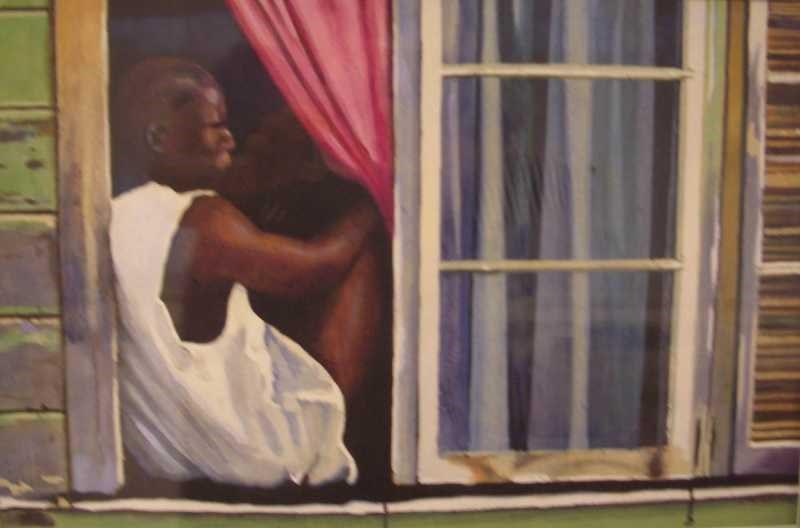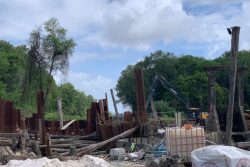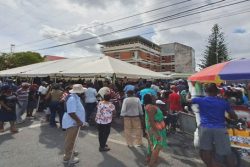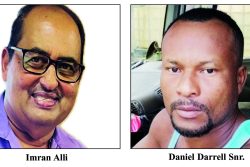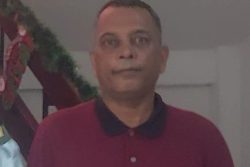It is with great regret that I have learnt about the death of Angold Thompson as a result of a fire in his home. My sincere sympathies are extended to his extended family in this time of their grief. For myself personally it means the loss of another friend and creative artist, and for Guyana one of the finest artists it has produced.
I knew his father Basil Thompson who was a member of the Guyanese Art Group which had its last show in 1953 at the Freemason’s Hall in Church Street. He painted scenes from around Georgetown in a realistic manner as did most members. Father and son both were of a pleasant disposition.


Thompson studied art at Central High School in the 1960s along with fellow artist Victor Davson. John Chriswick from the UK was the art master who gave them a sound foundation in drawing and painting. Thompson was able to master the very technical process involved in watercolour painting before moving on to painting in oils and acrylics later. He did follow in his father’s footsteps to become a fine painter in his own right.
Thompson did not involve himself too much with the artist’s community in the 60s, which in any case was relatively small and never met to discuss art. He did take part occasionally in exhibitions. The last time I saw his work was in a National Art and Crafts Competition. I stood for quite a while admiring his sense of composition, use of colour, light and shade and figure painting which involved complex poses. One work in particular that stood out was a painting about a Hindu Wedding. There were people sitting in the shade with sunlight reflected from the ground outside. The lily leaves used for eating had a living translucent appearance. His use of a variety of colours did not confuse the eye but effectively held the composition together. It would be easy to suggest looking at it that the painting was a copy of a photograph. Whether so or not both would reveal a sense of composition that has to be complimented. In any event the final work transcended mere copying, a remarkable achievement indeed.
I did not meet Thompson often but whenever I did, it afforded an opportunity to find out what he was doing. On one occasion he said that he could not survive by selling paintings and had taken up freelance photography to supplement his earnings. Artwork was sold, but never enough to make a decent living. There was never an art market so to speak then or now in Guyana. It would take a revolution in visual education to create an under-standing within the population of what artists do in order to offer financial support. Artists then and now had to find another job.
Artists like Nunes, another fine talent, had to produce a wide range of painting styles to exist. One result was that you could not easily identify specific themes in his work or his major interest other than surviving. In the case of Thompson, even though his work evolved his hand or touch was still recognizable, because an evolutionary process was involved and his themes remained the same more or less. He worked in a realistic manner where his drawing had a fluidity that could also be observed in the drawings of Emerson Samuels who was his senior. For a number of years Thompson also exhibited small works for sale, mainly landscapes, in a gallery in Speightstown Barbados that specializes in showing work by Caribbean artists.
Thompson had a reserved manner and was not attention seeking. He did not fit the common perception, the cliche of the artist as someone who behaved in an eccentric manner. His main objective was the development of his work and in this I think he certainly succeeded.
I will remember him as being a person who had a sense of self worth, was respectful of others and dedicated to his craft and hope this reflects the opinion of those who knew him. Guyana has indeed lost another of its best artists, a fine example of those of his generation and those following.
